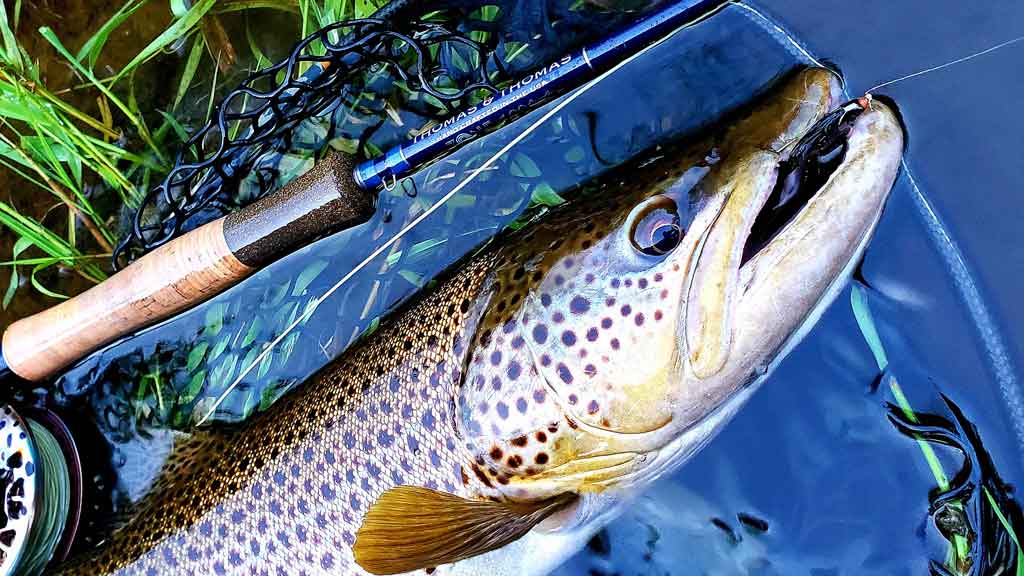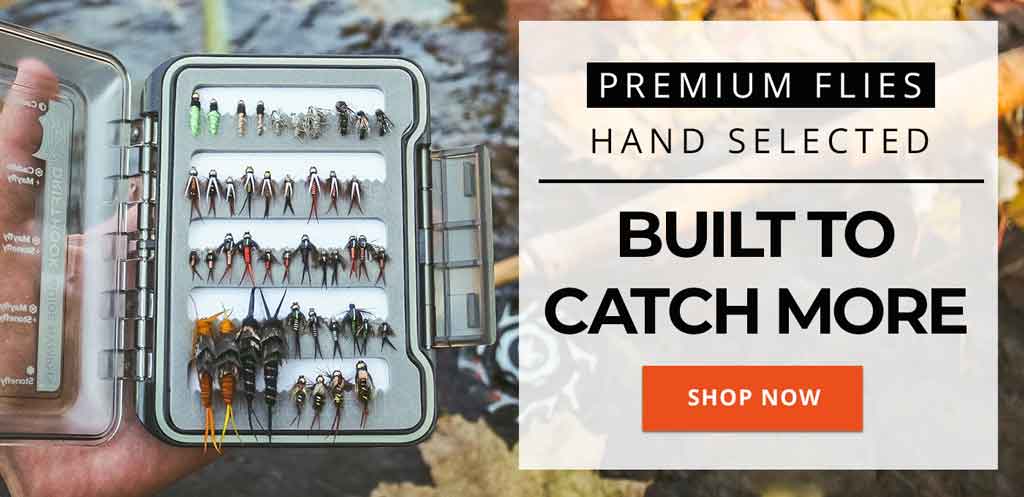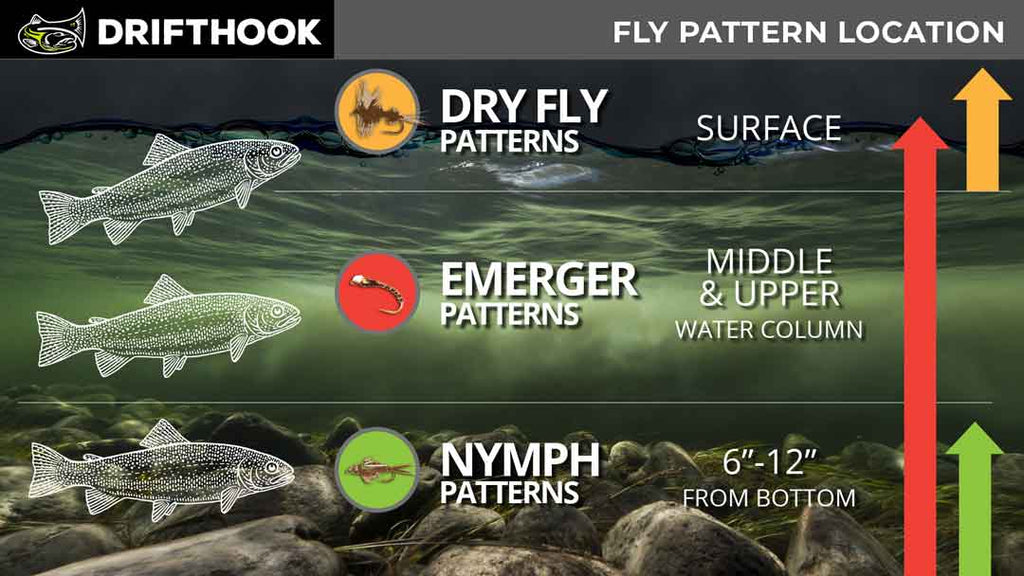Nymphing, often known as fly fishing, is unquestionably one of the most popular types of fly fishing out there.

Nymphing is the method of fishing using artificial flies that resemble young aquatic insects, larval, or other sub-aquatic life forms such as worms and crustaceans that trout find attractive. In other words, fly fishing is the process of catching a large quantity of fish in almost any water body at any time of the year.
Before the insects become adults, mayflies, caddisflies, and stoneflies spend their juvenile years underwater as nymphs. In contrast, other species of insects swim through the water, eventually being carried downstream by the river.
Why should you be concerned about these peculiar aquatic insects and their unusual life cycle? Because nymphs are a food source for trout. And if you’d like to catch trout regularly? Knowing how to fish nymph-imitated flies is critical.
A point to remember: Nymphing is also classified as fly fishing.
To begin, let’s examine why you should fish in the first place.
Table of Contents
Why Nymphing is the Most Effective Method of Fly Fishing
While dry flies get the bulk of attention and praise from fly fishers, the reality is that trout spend most of their time eating nymphs underwater.
Nymphs are found in lakes and rivers at all times of the year and all hours of the day. And trout spend the majority of their time eating them.
That is why nymph fishing is so effective. As trout are constantly feeding on nymphs, you do not need to time your approach or wait for the perfect hatch to start catching fish. Instead, tie one or more artificial nymph flies in color and size that match the real insects present in the water and start fishing.
When and Where to Fish Nymphs?
The beautiful part is that you can find nymph almost in any water, whether it’s a swiftly-moving freestone stream, a sparkling spring creek, or maybe even a Stillwater lake or pond. This area may be home to an aquatic insect. The nymph usually remains submerged underwater whether a hatch occurs or not.
Thus, regardless of the stream or lake, wherever you are fishing, nymph flies may be used to catch fish. The first step toward success is learning about the live nymphs that trout consume to match the artificial one to the natural insect. The second critical skill is studying the water to get your bait to the correct location with the appropriate presentation to encourage the trout to bite.
We’ll discuss how to do all of this later, but the point is to locate the lake or stream where you can find trout and use nymphs to catch them. If only catching fish and taking it back home does not quench the thirst of your adventure, provides fishing-related apparel and merchandise that will fascinate every fish enthusiast.
What Equipment Do You Need?
Often in fishing, pursuing a new species or mastering a new casting method necessitates a costly visit to the fly shop to get all new equipment. Fortunately, this is not the case with nymph fishing.
Nymphing rods may get very complex. Suppose you’re serious about getting into this type of fishing, then you should consider purchasing the drift fly rods, which in their basic form is 3wt 9ft fly rod.
The revolutionary feature of this rod is the ability to add length without untying your fly line. The rod parts extend the length of the rod from 9 feet to more than 12 feet.
This method does not require a high-performance rod. Except for neatly storing lines, your fly reel will see little activity during nymphing until you hook onto a big one. The majority of fish may be captured by handed stripping.
Here is a short review of gears needed for fly fishing:
Rod: 9-foot 4,5, or 6-weight rod with a medium-to-fast action
Reel: A standard single action fly reel that will match the weight of the rod.
Line: Floating line that is weight forward
Leader: 9-foot tapered nylon leader
Tippet: 3X, 4X, 5X, and 6X spools
Pretty straightforward, isn’t it? Of course, you’ll still need some flies and a few other pieces of nymphing-specific gear, but as long as you have that fundamental rod and reel setup, you’re ready.

Modern nymphing rods, lines, and reels are incredibly well-designed for their intended use. However, if it is your first venture into fly fishing, it will be wise, to begin with, a fly rod combination capable of more than just nymphing.
With the ever-popular 9-foot 5-weight, it’s difficult to go wrong. It is enough to handle the big fish you’re likely to encounter when nymphing, and it’ll throw both conventional and indicator nymph setups effortlessly.
Unless you’re chuck-and-ducking, the only fly line you’ll need to nymph streams and rivers is a weight-forward floating line suited to your rod. If you want to try still water nymphing, a full sinking or perhaps an intermediate line will be beneficial. However, you may still catch trout in lakes with a long leader on a floating line.
Along with a well-stocked nymph box, you’ll need the following essential nymphing gear to get started: spools of tippet sizes 3X-7X, butt section or high-vis sighter material, split shot, strike indicators, nippers, and hemostats.

Techniques
While dry flies or streamers have their role, it’s challenging to match nymphs’ flexibility and year-round effectiveness. If you have learned to adjust your nymphing rigs and techniques to the changing circumstances of the day, you’ll be able to catch fish in every stream, pond, river, creek, or lake you visit at any time of year.
Now it’s time to tie everything together by discussing the fundamental nymphing components that apply to almost all rigging techniques. When choosing how to nymph on a new river, consider the following factors:
Depth Control
Because trout like to eat nymphs at the bottom of the stream, it is critical to get your bait under deep water. By incorporating the different techniques and rig adjustments discussed earlier, you may have control over the depth to which your flies sink.

When fishing in shallow or slow-moving water, conventional lightweight and indicator-less nymph setups are often sufficient to sink the fly to the bottom, as long as adequate runway is provided. As depths near 3-5 feet while current rises, rigs with the additional weight, like a Czech nymph rig or the two-fly strike indicator, start to rise.
When fishing in water more than 6 feet deep, more weight is required to bring your nymphs to the bottom. Tungsten bead-head nymphs tied to a Euro-style nymphing line with a high-vis sighter may be the key to luring fish from deep water.
Suppose circumstances deteriorate to a severe level of high swamp water with large fish in deep pools. You may need to substitute slinky weights for the split shot and catch fish chuck-and-duck style in that case.
Drift Control and Presentation
While it is essential to get your nymphs at the correct depth to attract the fish, if they are not drifting naturally, they will not lure very well (or at all). And, since natural drift is achieved by removing all drag from the nymphs, drift management is primarily a matter of line control.
Line control varies significantly across nymphing techniques. For more traditional fly casting methods, like traditional or indicator nymphing, slack must be applied continuously to ensure a drag-free drift, either via casting movements like the “tuck cast” or through frequent line mends. However, when using “tight-line” European nymphing methods, less attention is put on creating a “drag-free” drift, preferring to remain close to the flies to improve strike detection sensitivity.
Strike Detection
If your depth and drift control are reasonable, you have a better chance of getting a bite. However, unless you’re prepared and aware of what to look for, the fish will bite the hook without you knowing it.
When you’re just starting, you will find that fishing has considerable advantages using a highly visible and buoyant strike indicator. Not only will you be able to see if a fish eats your bait, but you will also know when your rig is dragging. Additionally, strike indications enable the suspension of a large amount of weight to achieve the desired depth.
To begin, fishing nymphs without a floating strike indicator requires you to rely on your senses to identify bites. By guiding your lures downstream, you can feel each bump of your rig against the bottom and the grip of a trout grabbing your fly. Additionally, when more stealth is required, whether in clear spring streams or shallow lakes, fishing with a bare leader significantly minimizes the chance of scaring away your prey.
Conclusion
With that basic setup in place, along with the methods and ideas, you’ll be well on your way to mastering nymph fishing! When you first begin, keep things simple and make an effort to appreciate every part of the nymphing experience. Catching fish is a pleasure!
About the Author
Matthew Bernhardt, a third-generation Coloradan, grew up at the forefront of the state’s fly-fishing revolution, enjoying time on the water, side by side with experienced guides and lifelong anglers.By combining his passion for fly-fishing with input from other experienced fly-fishers and guides and his fine arts degree from Colorado State University, Matthew spent five years carefully developing the Drifthook Fly Fishing System, built to help every angler catch more trout.When he’s not spending time with his wonderful family, you’ll find him out on the water catching MONSTER trout, and he anxiously looks forward to the day when his kids are old enough to join him there.







































![Air gun 101: The differences between .177 & .22 – Which jobs they do best ? [Infographic]](https://airgunmaniac.b-cdn.net/wp-content/uploads/2024/11/1773-150x150.jpeg)



